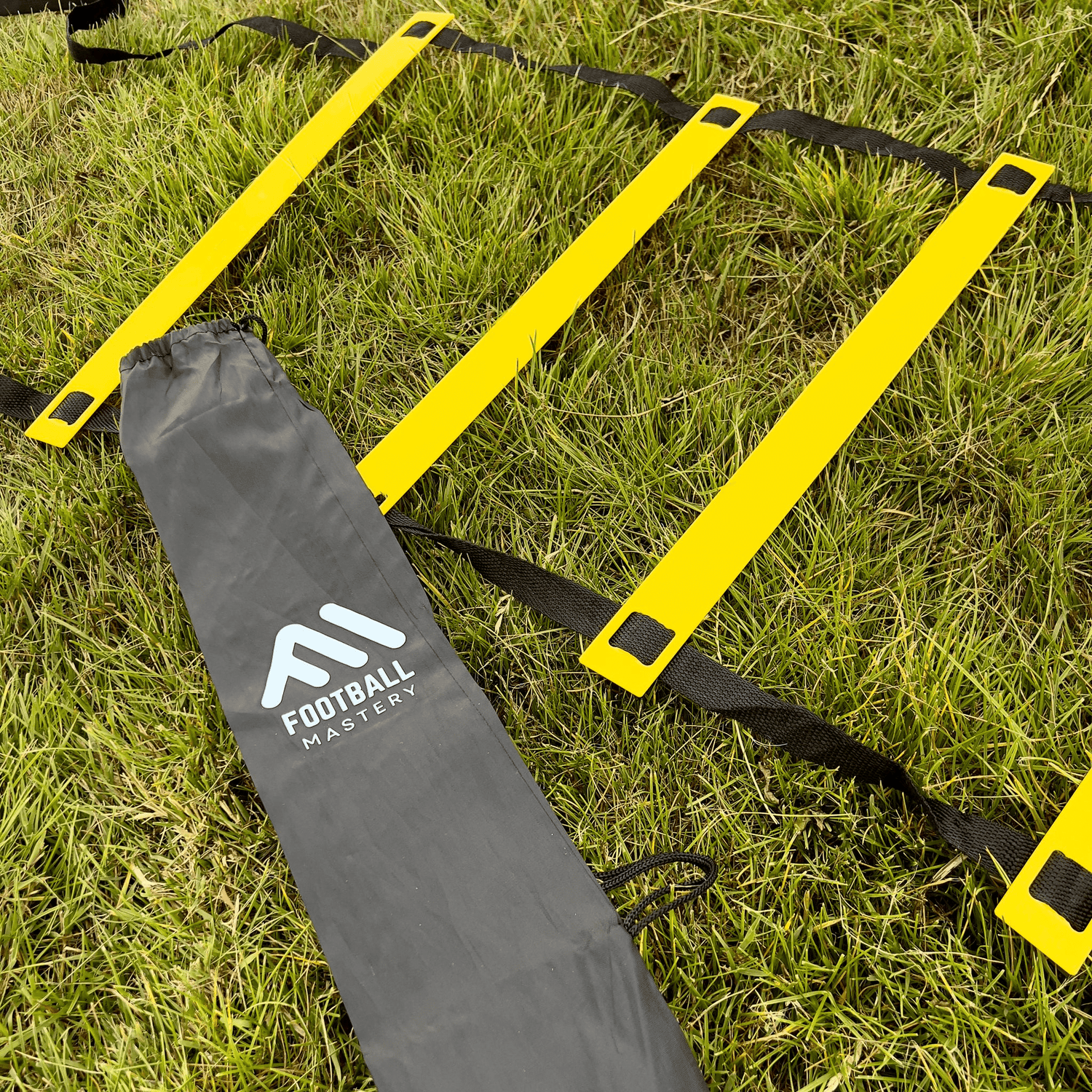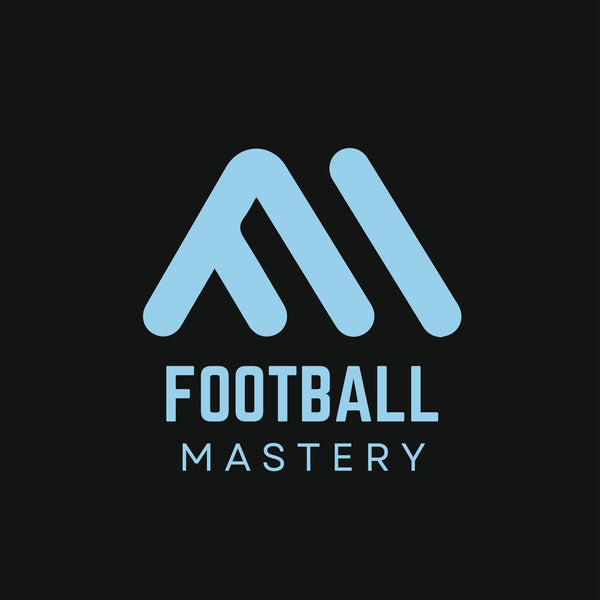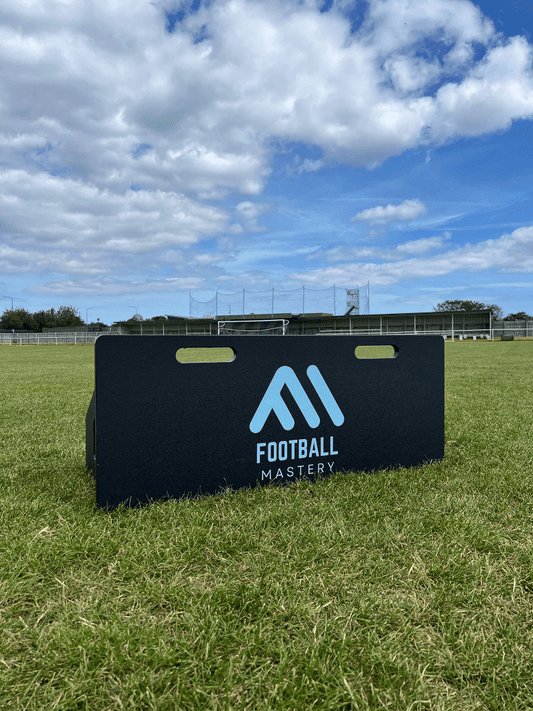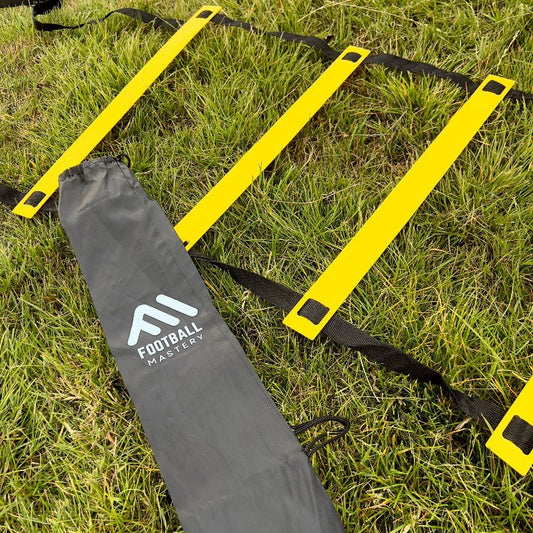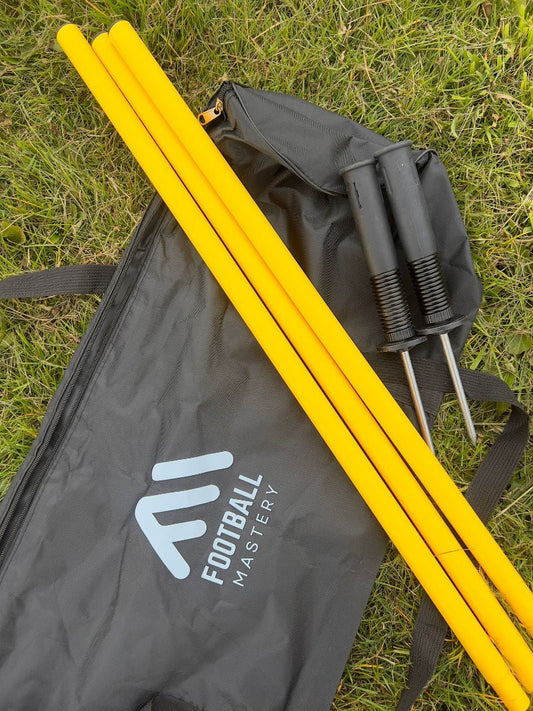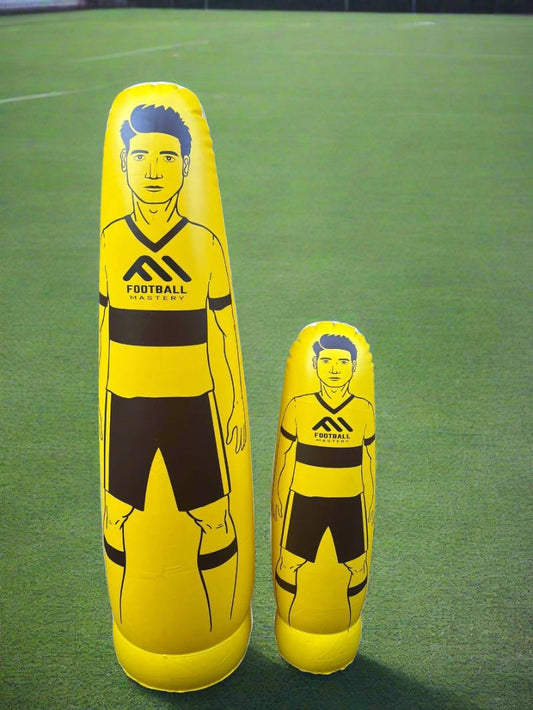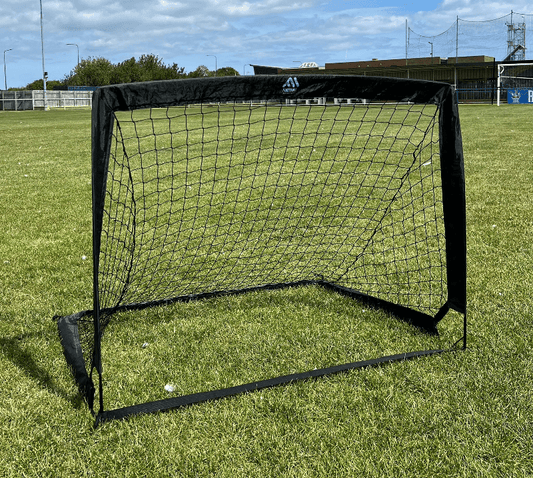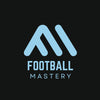
Agility Ladders for Kids – Do They Work?
Share
In this article, we break down the real impact of agility ladders on children's athletic development. From foot speed and coordination to more advanced performance metrics like sprint performance and first step quickness, we'll explore what agility ladders can (and can’t) deliver. Drawing from expert critiques, scientific evidence, and practical coaching experience, we’ll uncover whether agility ladders are a valuable training tool for youth athletes, or just another “magic drill” with more flash than function.
We’ll also explore better alternatives, examine how motor learning and neuromuscular coordination really work, and provide actionable suggestions with internal product links to tools that are genuinely effective in building athletic skills.
Agility Ladders: The Popularity vs. The Performance
Walk into any youth football session and you’re likely to see them: brightly coloured agility ladders laid out across the turf, kids hopping, shuffling, and skipping through patterns with intense focus.
On the surface, they look like the perfect tool. Affordable, fun, easy to set up, and engaging for both players and parents — agility ladders appear to tick all the boxes for developing speed and coordination.
But if you’re asking the question, “Agility Ladders for Kids – Do They Work?” — the real answer lies beneath the surface.
“Just because something looks athletic, doesn’t mean it builds athleticism.”
This is a case where visual appeal often outpaces actual skill transfer.
Coordination vs. Control: What Are Kids Really Learning?
The fundamental promise of agility ladders is that they improve quick feet, foot speed, and coordination. And to be fair — they can. At least initially.
For young or untrained children, basic ladder drills like the ickey shuffle or lateral steps help them build:
- Spatial awareness
- Rhythm and timing
- General balance and movement fluency
These benefits are particularly valuable during key training windows of neural development, typically between ages 7–12, when motor control is still rapidly forming.
But here’s the catch — these benefits plateau quickly.
Agility ladders operate with pre-set footwork patterns, which makes them great for memorising sequences, but not for adapting to the unpredictable demands of sport. Football, after all, is not played in straight lines with perfect symmetry.
The Myth of “Fast Feet” and Speed Development
One of the most common misconceptions is that fast footwork equals real speed.
In reality, sprint performance and first step quickness are largely driven by:
- Force production into the ground
- Lower body strength and power
- Reactive timing in response to play
Agility ladders, while useful for warm-ups or simple drills, produce low force outputs. They fail to challenge an athlete’s ability to generate ground reaction force, a crucial component of acceleration and deceleration control.
As Eric Cressey puts it:
“Fast feet don’t use the ground well to produce force. Think of the ground as the well from which we draw speed.”
What the Research Says: Measurable Gains or Just Movement?
A controlled study of youth soccer players explored the impact of a six-week agility ladder program. Both the ladder-trained group and control group improved their 10m and 20m sprint test results slightly — but the difference between them was statistically insignificant. The ladder group saw no meaningful improvement in agility or dribbling speed tests compared to those just doing regular football training.
This suggests that sport-specific movement patterns, rather than choreographed foot drills, are more valuable for long-term development.
And that’s where a well-designed agility training system becomes critical — one that goes beyond “quick feet” and taps into eccentric strength, single-leg stability, and multi-directional speed.
Smarter Tools, Better Skills
If you’re looking for tools that support real development, consider pairing your coaching with functional, sport-relevant equipment. For example, our Speed & Agility Bundle provides everything needed to build dynamic movement and reactive agility, including:
- Mini hurdles for plyometric jumps
- Cones for change of direction drills
- Resistance bands for explosive acceleration
These tools challenge movement quality, not just quantity — creating transferable skills that show up in-game.
Beyond the Ladder: Building the Cognitive Side of Agility
Agility in football isn’t just about how fast your feet can move — it’s about how well you can read, react, and execute under pressure. This is where agility ladders fall short. They focus on patterned footwork, but real-world performance demands unpredictability and stimulus response.
The moment a child reacts to an opponent's movement, intercepts a pass, or feints and cuts into space, they’re using:
- Brain-to-muscle connection
- Reactive agility
- Cognitive processing speed
These elements are rarely, if ever, developed through ladder drills alone.
Instead, you’ll want to engage your players with open-skill activities that involve:
- External stimuli (e.g. a call, clap, or visual cue)
- Decision-making under pressure
- Directional changes based on real-time events
“Athletes don’t train in a vacuum — the best agility drills force them to think and move at the same time.”
Effective Alternatives That Drive Real Change
Let’s get practical. If ladders don’t hold up under scrutiny, what does? Here are 3 proven training methods that outperform agility ladders when it comes to athletic development:
1. Small-Sided Games
These mimic the chaotic, reactive environment of a match. Players develop:
- Sport-specific agility
- Quick decision-making
- Motor learning through experience
SSGs also encourage multiple repetitions of real in-game situations — not just rehearsed movements.
2. Low Hurdle Drills
Low hurdles introduce task complexity and movement variability. They:
- Demand higher force production than ladders
- Train hip mobility and eccentric control
- Improve the ability to push off laterally and decelerate quickly
We recommend starting with basic hops and progressing to multidirectional hurdle sequences.
3. Plyometric and Sprint Drills
Instead of just moving feet quickly, these build true lower body power and explosive strength. Use them to improve:
- Acceleration mechanics
- First push power
- Speed endurance
Explore our Power & Plyometrics Tools designed for kids, which includes soft surfaces and age-appropriate jump training gear.
The “Skill Transfer” Dilemma
When evaluating any training tool, always ask:
“Will this skill transfer to a real game?”
This is where agility ladders frequently disappoint. Despite their benefits as warm-up tools or for introducing movement to beginners, the carryover to sport-specific performance is often negligible.
A child may master the slalom test in training, but if that doesn’t translate to cutting past defenders or controlling the ball in a congested midfield, it's hard to justify time spent.
Motivation, Buy-In, and Visual Learning
Let’s not completely write ladders off — there’s a psychological aspect to consider.
For younger players, agility ladders can serve as:
- Motivational tools to break training monotony
- Visually engaging ways to build confidence
- A bridge into more complex movement work
When used in moderation, they may help parental expectations feel met — especially when parents associate foot speed drills with progress.
But they should never replace progressive, scientifically backed training methods that align with actual performance outcomes.
Want a Smarter Way to Train?
Explore our curated Football Mastery Training Blog where we break down youth-specific development plans, explain training science in plain language, and share field-tested agility drills that work.
From movement fundamentals to elite-level prep, we’re here to make sure you’re not just training hard — you’re training smart.
Integrating Agility Ladders the Right Way
So, do agility ladders belong in your training bag? The short answer: yes, but with purpose and restraint.
When used strategically, agility ladders can support key aspects of youth athletic development — particularly in the early stages. But they should be complementary, not central, to your sessions.
Here’s how to use them without falling into the “magic drill” trap:
✅ Use Agility Ladders For:
- Warm-ups: Great for elevating heart rate and activating neural pathways
- Footwork exposure: Especially useful for absolute beginners or younger age groups
- Coordination practice: Builds rhythm, balance, and basic movement literacy
❌ Avoid Agility Ladders For:
- Game-speed agility development
- Force production or sprint training
- Replacing sport-specific movement patterns
“The ladder is a tool, not a solution.”
Sample Youth Agility Session Framework
To bring everything together, here’s a framework you can apply to your next football session. This blends agility ladder work with higher-impact, transfer-friendly exercises.
1. Dynamic Warm-Up (10 mins)
- Ladder drills (2 sets): Ickey Shuffle + Lateral Steps
- Mobility work: Hip circles, leg swings, ankle rolls
- Bodyweight movements: Lunges, squats, hops
2. Movement Prep (10 mins)
- Mini hurdles lateral jumps
- Quick ground touches + directional calls
- Forward and backward hops with cone responses
3. Reactive Agility (15 mins)
- Partner mirroring drill
- Coach cue change-of-direction
- Ball control under pressure
4. Competitive Small-Sided Games (15 mins)
- 3v3 tight-space with end zones
- Restrict touches to promote faster decision-making
- Reward sharp directional cuts and quick recoveries
How Football Mastery Helps Coaches & Parents
At Football Mastery, we’re not just selling training tools — we’re delivering a complete development ecosystem. Our Coaching Equipment Collection includes everything you need to:
- Design age-appropriate drills
- Reinforce movement principles
- Track skill improvements over time
You’ll also find blog posts packed with insights, weekly training inspiration, and strategies backed by sports science — tailored specifically for youth athletes and grassroots football.
The Final Verdict: Do Agility Ladders Work?
In isolation? No — not in the way many believe.
In combination with smart programming, structured progressions, and football-specific movement? Absolutely.
Agility ladders can offer:
- A gateway into coordinated movement
- A visually engaging tool for younger players
- A foundation for more complex drills
But to truly improve sprint performance, first step quickness, or reactive agility, they must be supported by:
- Strength and plyometric work
- Stimulus-driven drills
- Sport-specific challenges
So next time someone asks, “Agility Ladders for Kids – Do They Work?”, you’ll have a better answer than most — rooted in science, shaped by experience, and ready to deliver results on the pitch.
FAQ: Agility Ladders for Kids – Do They Work?
1. What age is appropriate for kids to start using agility ladders?
Agility ladders can be introduced as early as age 6–7, when children are developing basic motor skills and coordination. The key is to keep drills simple, fun, and focused on movement quality rather than speed or complexity.
2. Are agility ladders safe for younger children?
Yes — agility ladders are generally low-impact and safe when used properly. Ensure a non-slip surface, appropriate footwear, and supervision to reduce the risk of tripping or overexertion, especially with very young or less coordinated children.
3. How often should agility ladder drills be done for kids?
For most youth athletes, 1–2 sessions per week is sufficient. Overusing agility ladders can lead to boredom, plateaus, or unnecessary focus on low-transfer drills. They should be part of a broader training plan.
4. Can agility ladders help with balance and coordination in kids?
Absolutely. They’re especially helpful in teaching rhythm, timing, and directional control, which are foundational components of balance and coordination. This makes them ideal for beginners or those new to sport.
5. Do agility ladders help kids who struggle with footwork or are “flat-footed”?
Agility ladders can provide basic footwork structure and awareness for kids who are less naturally agile. However, to improve actual performance, it’s important to combine them with strength and mobility work focused on the lower limbs.
6. Should kids use agility ladders with a ball or without?
Initially, it’s best to use ladders without the ball to develop clean foot patterns and spatial awareness. Once confident, coaches can integrate ball control drills to mimic real-game scenarios and enhance skill transfer.
7. How long should agility ladder drills last in a single session?
Keep ladder drills short and sharp — typically 5–10 minutes within a warm-up or skill circuit. The goal is not fatigue, but neuromuscular activation and movement quality.
8. Are agility ladders better than cone drills or hurdles for kids?
Not necessarily. Each tool offers different benefits:
- Agility ladders develop coordination and quick feet.
- Cones improve spatial awareness and direction change.
- Hurdles build explosive power and range of motion.
For best results, include all three in your training sessions.
9. Can agility ladders improve a child's performance in other sports?
Yes, to a point. Ladders can enhance general athleticism — particularly coordination and foot control — which can translate to sports like basketball, tennis, or rugby. However, sport-specific training is still essential for meaningful performance gains.
10. What should I look for when buying an agility ladder for my child?
Look for a ladder that is:
- Durable and tangle-free
- Adjustable in spacing for different drill types
- Lightweight and portable
- Includes a carrying bag for easy storage
You can explore high-quality youth training tools in our Speed & Agility Collection designed specifically for grassroots and youth footballers.
